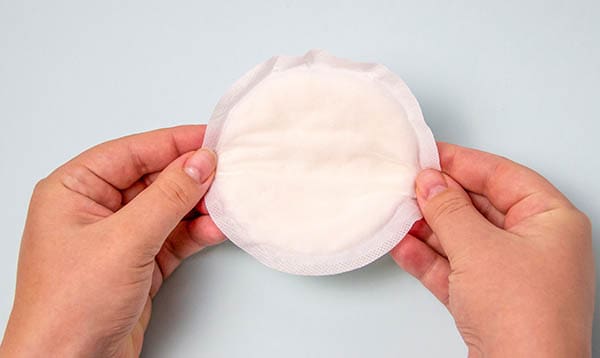By Ali Weatherford
Although it is a very normal thing, most people are surprised when they leak from their nipples during pregnancy. You might wonder what it is, whether it’s normal, and whether it means anything.
The answers are:
- Colostrum
- Yes
- Not really
You have everything you need installed and ready to make milk by the time you’re about halfway through pregnancy. By 16 weeks, some people might notice some leaking or be able to squeeze out small drops of a milky substance. That is called Lactogenesis 1. I love the word lactogenesis. If you break it down, it just means the origin of milk. For Lactogenesis 1, your body has done the work of creating and expanding milk ducts or glands (alveolar buds). You’ll probably notice some changes in the breast tissue while this is happening. They may get larger and more tender at times. Even if you can’t see much change on the outside, it’s still most likely that things are happening on the inside.
Once you reach that point in your pregnancy, you might notice some leaking, or you might not.
What is it?
Colostrum is the name for the milky substance you might see during pregnancy. For most people, it will be a very small amount, just an occasional drip. You might notice a discolored wet spot on the inside of your bra. You might see some drips if your nipples are stimulated by friction from clothing or with sexual arousal.
Colostrum is special, because it’s your body’s first milk. Once your baby is a few days old, you will make a different kind of milk. Colostrum has more of the things a baby needs immediately after being born. They don’t need a lot of food yet, but they do need more immunoglobulins, the immune system enhancing antibodies that your body has developed to help protect your baby from illness.
The milk also needs to feed your baby’s very new microbiome. A microbiome is a little community of microbes that lives within the body. Those microbes are a combination of bacteria, fungi, parasites, and viruses. This might sound bad, but a microbiome is actually considered a supporting organ. Those bugs co-exist and work together to keep you healthy. We all have many microbiomes that are responsible for all kinds of bodily functions. The biggest microbiome is in the intestines. When a baby is born, they have a pretty sterile gut. They need to develop a microbiome there so they can digest food and support good immune function. They receive a good dose of microbes from their mother during vaginal birth and skin-to-skin contact, and then the colostrum helps it thrive and multiply so your baby can start digesting food and fighting off infections.
Is it normal to leak milk?
It is normal to leak milk during pregnancy, although most people don’t. Most of the time, the milk doesn’t start coming out until after the baby is born. Lactogenesis 2 occurs once the baby is born and the placenta comes away from the body. The detachment of the placenta triggers a big drop in progesterone levels which allows your body to be flooded with a hormone called prolactin. That’s another great word! If you break it down, it means for lactation.
That hormone is responsible for Lactogenesis 2, which is where the milk is released. During pregnancy, the prolactin is mostly held back by high levels of pregnancy progesterone. If the prolactin level gets to be higher than the progesterone level at some points, that means some leaking. It’s not the most usual thing, but it’s very normal.
Does it mean anything?
Since leaking is considered normal, it definitely does not mean that anything is wrong. As long as it looks normal, you don’t need to worry. Colostrum is thicker than the milk you might be imagining, and it might be sticky and yellowish. If you notice any blood or discoloration, you may want to tell your doctor. It’s very important to remember two things:
- Leaking doesn’t mean that you have too much milk, or that breastfeeding will be somehow easier or better for you.
- If you don’t leak, it doesn’t mean that you don’t have milk or that you will have a hard time breastfeeding.
Since Lactogenesis 1 means you have all the equipment you need to feed your baby, you might think about collecting some colostrum while you’re pregnant. Even if you are not leaking, you will likely be able to do this. Prenatal colostrum collection means that you collect and store colostrum to use after you give birth.
There are a lot of great reasons to do this, especially if you think there could be some obstacles to breastfeeding in the early days because of a medical condition. For most people, it’s very safe to start expressing breast milk starting at about 36 weeks of pregnancy. There are some conditions that might make this less safe, so be sure to talk it over with your care provider.
We have a great guide for how to collect the milk when you’re ready. Hand expression is the preferred method for getting the colostrum out. Using a pump is not ideal because there is such a small amount of milk available.

